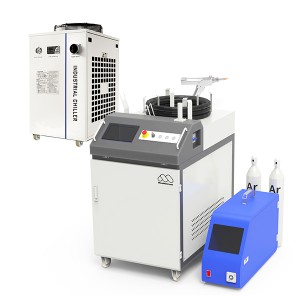Laser Welding vs. MIG Welding:Which is Stronger
A Comprehensive compare betweem laser welding and MIG welding
Welding is a crucial process in the manufacturing industry, as it allows for the joining of metal parts and components. There are various types of welding methods available, including MIG (Metal Inert Gas) welding and laser welding. Both methods have their advantages and disadvantages, but the question remains: is laser welding as strong as MIG welding?
Laser Welding
Laser welding is a process that involves using a high-powered laser beam to melt and join metal parts. The laser beam is directed at the parts to be welded, causing the metal to melt and fuse together. The process is non-contact, which means there is no physical contact between the welding tool and the parts being welded.
One of the main advantages of laser welder is its precision. The laser beam can be focused to a small spot size, allowing for precise and accurate welding. This precision also allows for minimal distortion of the metal, making it suitable for welding delicate or intricate parts.
Another advantage of laser welding is its speed. The high-powered laser beam can melt and join metal parts quickly, reducing welding times and increasing productivity. Additionally, laser welder can be performed on a variety of materials, including stainless steel, aluminum, and titanium.

MIG Welding
MIG welding, on the other hand, involves using a welding gun to feed a metal wire into the weld joint, which is then melted and fused together with the base metal. MIG welding is a popular welding method due to its ease of use and versatility. It can be used on a wide range of materials and is suitable for welding thick sections of metal.
One of the advantages of MIG welding is its versatility. MIG welding can be used on a variety of materials, including stainless steel, aluminum, and mild steel. Additionally, MIG welding is suitable for welding thick sections of metal, making it ideal for heavy-duty applications.
Another advantage of MIG welding is its ease of use. The welding gun used in MIG welding feeds the wire automatically, making it easier for beginners to use. Additionally, MIG welding is faster than traditional welding methods, reducing welding times and increasing productivity.

Strength of Laser Welding vs. MIG Welding
When it comes to the strength of the weld, both laser welding and MIG welding can produce strong welds. However, the strength of the weld depends on various factors, such as the welding technique used, the material being welded, and the quality of the weld.
In general, welding with laser produces a smaller and more concentrated heat-affected zone (HAZ) than MIG welding. This means that laser welder can produce stronger welds than MIG welding, as the smaller HAZ reduces the risk of cracking and distortion.
However, MIG welding can produce strong welds if performed correctly. MIG welding requires precise control of the welding gun, wire feed, and gas flow, which can affect the quality and strength of the weld. Additionally, MIG welding produces a larger HAZ than laser welding, which can lead to distortion and cracking if not controlled properly.
In Conclusion
Both laser welding and MIG welding can produce strong welds. The strength of the weld depends on various factors, such as the welding technique used, the material being welded, and the quality of the weld. Laser welding is known for its precision and speed, while MIG welding is known for its versatility and ease of use.
Video Display | Glance for Welding with laser
Recommended laser welder
Any questions about the operation of Welding with laser?
Post time: Mar-24-2023



